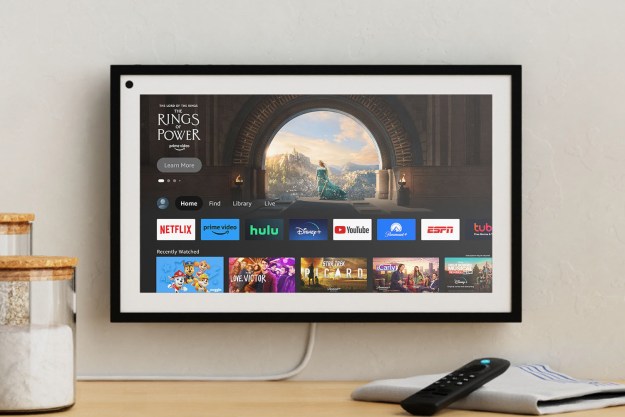Along with all of the new devices and services that Amazon announced at its September 28 event, the company said that its Echo Studio smart speaker will be getting an update with new spatial audio processing technology and frequency range extension. The update will initially hit the Echo Studio and Echo Show 15, but it will roll out to other compatible Echo devices in the future.

If you’re scratching your head because the Echo Studio already supports Dolby Atmos and Sony’s 360 Reality Audio (360RA) formats — which are both technically under the spatial audio umbrella term — here’s what Amazon says is new with the update:
Our custom-built spatial audio processing technology is designed to enhance stereo sound, making music and movie soundtracks feel closer to the listener with greater width, clarity, and presence. It mirrors the performance of a hi-fi stereo system, so vocal performances are more present in the center, while the stereo-panned instruments are better defined on the side, creating a more immersive sound experience that reproduces the artist’s intent. Additionally, frequency range extension technology delivers better performance, improved midrange clarity, and deeper bass.
Amazon has a full explainer for the new technology on its dedicated Amazon Science site, which provides more insight into what’s going on, but be warned, it’s very scientific and heavy on jargon. Not exactly light reading.
Spatial audio has become a very big selling point for companies like Apple and Google, both of which have added new or enhanced features to their wireless earbuds (second-gen AirPods Pro, Pixel Buds Pro) to better support the audio format. However, these features are meant to enhance existing spatial formats like Dolby Atmos and 360RA. It seems that Amazon is using the technology to enhance any stereo audio content, effectively upscaling normal two-channel music into a more immersive mix.
Similar technology is used in AV receivers and soundbars, like DTS Virtual:X, or in wireless earbuds with Dirac’s spatial audio processing found in the Sudio E2. We’ll have to wait and see if Amazon’s version of spatial audio can be as effective when produced from a single speaker like the Echo Studio.
Editors' Recommendations
- Spatial audio via headphones: how science crams 9 speakers and a subwoofer inside your head
- Anker Soundcore’s Motion X500 packs spatial audio into a more portable package
- Everything announced at Amazon’s fall 2023 devices event
- Sonos’ new Era 100 and Era 300 wireless speakers go all-in on spatial audio and Bluetooth
- Amazon adds audio personalization to Echo Buds 2




